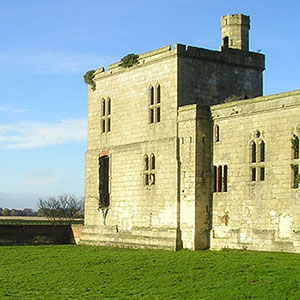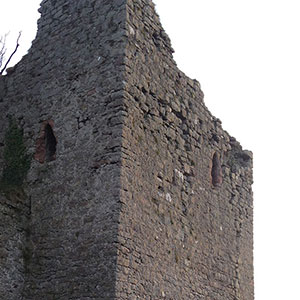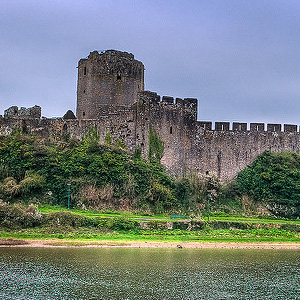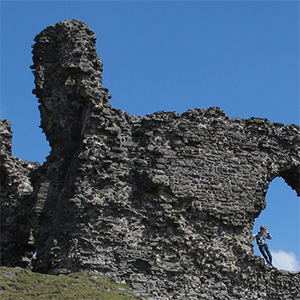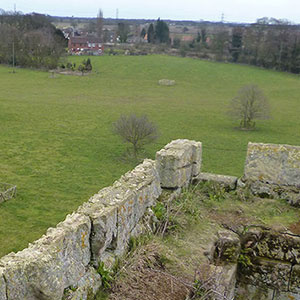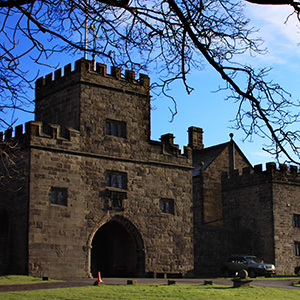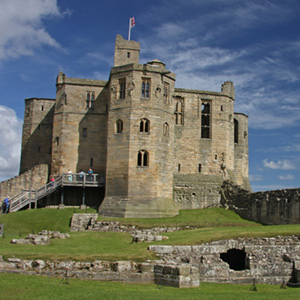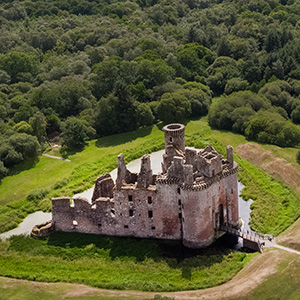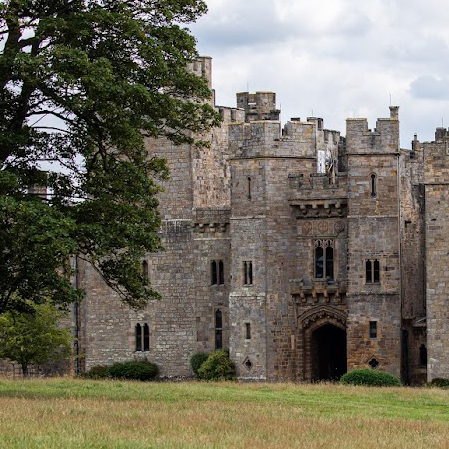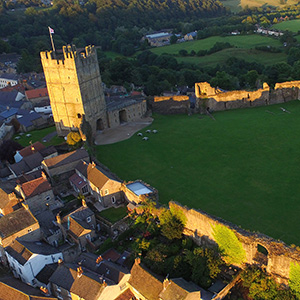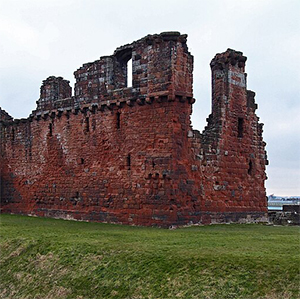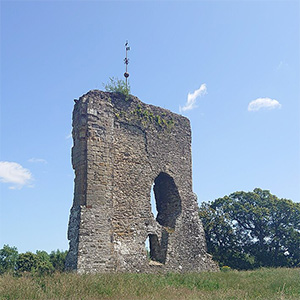Grants from the Castle Studies Trust
The Castle Studies Trust is able to fund types of work that enhance the understanding and knowledge of castles.
Grants will initially focus on new work on castles such as architectural and geophysical surveys or scientific tests such as radio-carbon dating as well as projects to enhance the general public’s understanding of castles such as reconstruction drawings.
Grants will be up to a maximum of £14,000 (incl VAT). They can also be used in conjunction with other funding sources to co-fund projects of a larger scale.
Criteria for grant applications can be downloaded here. (Adobe PDF)
Please also review our costing notes here here. (Microsoft Word)
If you would like to apply for a grant please download and complete the application form (Adobe PDF).
The grant application process will open in September each year and close on 1 December of the same year or on the Friday before if on a weekend.
If you have any questions regarding the criteria or any other aspect of the grant giving process, please contact Jeremy Cunnington at:
Email address: admin@castlestudiestrust.org
Or by post at:
Flat 3,
46 Ferme Park Road
London
N4 4ED
All grant applications will be assessed by a team of experts which so far includes:
Dr Kayt Armstrong
Kayt Armstrong is currently a PDRA on a landscape archaeology project at Durham University looking at the impacts of the Great Depression on the north east of England and currently on the management committee of the International Society for Archaeological Prospection. She completed her BA at Southampton and went on to take an MSc there in Archaeological Computing, before doing her PhD in archaeological geophysics at Bournemouth University. Since then she has worked on landscape archaeological projects in Italy and on Crete, specialising in ‘difficult’ geophysical surveys in challenging environments, as well as a recent stint in commercial archaeology in the UK. She has published research on the women’s peace camps at Greenham Common and is particularly interested in contested landscapes and integrating different scales and types of information using GIS.
Dr Jeremy Ashbee
Formerly Assistant Curator at the Tower of London, on which he wrote his doctorate; Jeremy is now Head Historic Property Curator at English Heritage and has responsibility for the conservation and presentation of the 420 monuments of the National Collection. He has 16 years of experience researching castles and has lectured and published widely on sites including the Tower of London, Dunstanburgh, Goodrich, Rochester, and most recently the Edwardian castles of North Wales, notably Conwy and Beaumaris.
Erik Matthews
He is currently Field Officer of the Architectural and Archaeological Society of Durham and Northumberland responsible for organising and co-ordinating the Society’s Fieldwork activities. This has enabled him to fully develop his interest in the Archaeology of the Late Medieval Elite Residence with a detailed survey of the tower house site at Lammerside Castle in Mallerstang Cumbria (former Westmoreland), on-going project to excavate the Late Medieval Pleasaunce and earlier Manorial site at Hornby Castle in Wensleydale North Yorkshire. He is also Archaeological Advisor to the Sockburn Hall Project near Darlington Co Durham.
Dr Tom McNeill
He was appointed to a lectureship at Queen’s university in 1973 and stayed there, becoming Senior lecturer, until his retirement in 2009. He was a founder-member of the Castle Studies Group and served as UK representative on the committee of Chateau Gaillard, as English-language editor and becoming President in 2008-10. He specialised in medieval stone buildings and published a number of books: Anglo-Norman Ulster (1980), Carrickfergus Castle (1981), The English Heritage book on Castles (1992, 2006), Castles in Ireland (1997) and Faith, Pride and Works (2005); he co-wrote with Jim Mallory on The Archaeology of Ulster (1991). He has also published articles on castles in Chateau Gaillard, Archaeological Journal, Proceedings of the Royal Irish Academy, etc.
Professor Richard Oram
Richard Oram is Professor of Medieval and Environmental History and Head of the School of Arts and Humanities at the University of Stirling. A graduate of the University of St Andrews (MA (Hons) Mediæval History with Archaeology and PhD Mediæval History), he joined the University of Stirling in 2002. His research focuses on secular and ecclesiastical lordship and architecture in the medieval and early renaissance periods, on historic climate change and subsistence crises in the North Atlantic region, and on the social and cultural responses to epidemic disease in the Middle Ages. His publications include Lordship and Architecture in Medieval and Renaissance Scotland (2005), Domination and Lordship: Scotland 1070-1230 (2011), and ‘A House that Thieves Might Knock At’: The Tower as Lordly Residence and The Tower and the Household (2015). He is a former council-member of the Historic Environment Advisory Council for Scotland.
Dr Stuart Prior
Stuart is Senior Teaching Fellow in Archaeological Practice in the Department of Archaeology and Anthropology at University of Bristol; He is also Head of Education for the Department. He is also Co-Director of the Berkeley Castle Project, a long-term archaeological research project which was established in 2005, that conducts annual fieldwork at Berkeley Castle, Gloucestershire. The project’s objective is to build up a detailed picture of the history and archaeology of the castle and the associated settlement of Berkeley.
Dr Gillian Scott
Gillian Scott was awarded her PhD in 2009 for her research on Irish Tower Houses at Queens University Belfast, where she also obtained her undergraduate degree in Archaeology and Palaeoecology. Since then Gillian has worked as an archaeologist and historic buildings specialist in the commercial sector and is now Senior Built Consultant at AECOM, a global infrastructure and engineering firm. Gillian took over editorship of the Castle Studies Group Bibliography in 2012 and became the Chair/Secretary of the Group in 2014. She has published several papers on the subject of Irish Tower Houses, and continues to take an active role in research both academically, and through her commercial work. Gillian is also the Standards and Guidance officer on the committee of the Chartered Institute for Archaeologists’ Buildings Archaeology Special Interest Group.
Dr Rachel Swallow FSA (Swallowtail Archaeology)
is a specialist in castles and landscape history, with about 30 years of research experience that has significantly deepened understanding of British fortifications and their wider settings. She has worked across academic and commercial history and archaeology, combining rigorous multidisciplinary scholarship with practical application. Rachel has published widely in national and international peer-reviewed journals and edited volumes, and has over 20 years of university lecturing experience at both undergraduate and postgraduate levels. A Fellow of the Society of Antiquaries of London, she is also a Visiting Research Fellow at the University of Chester and holds an honorary fellowship at the University of Liverpool.
Dr Sarah Kerr
is a lecturer in Archaeology at University College Cork, Ireland. She is a council member for the Society for Medieval Archaeology and Medieval Europe Research Community. She is also the Reviews Editor for the Medieval Archaeology journal. Sarah researches the built environment of medieval Europe and has written about English lodging ranges, castles and great houses, and Irish tower houses and round towers. She is equally interested in the role of historic buildings in contemporary society and has written about the impacts of climate change on built heritage in Ireland, Scotland and Denmark and the role of heritage in climate action.
Dr Elaine Jamieson
is currently Fieldwork Project Manager at the Department of Archaeology, University of York, where she leads modules in Landscape Archaeology and Post-excavation and is responsible for running their Archaeological Field School. Elaine worked as an Archaeological Investigator for Historic England for over 15 years where she specialised in landscape archaeology and analytical earthwork survey. Her research interests include the archaeology of medieval settlement and landscapes, with a particular focus on the expression of elite power. Elaine is currently Co-Director of the Skipsea Landscape Project, a six-year research project investigating the landscape of Skipsea Castle, East Yorkshire.
